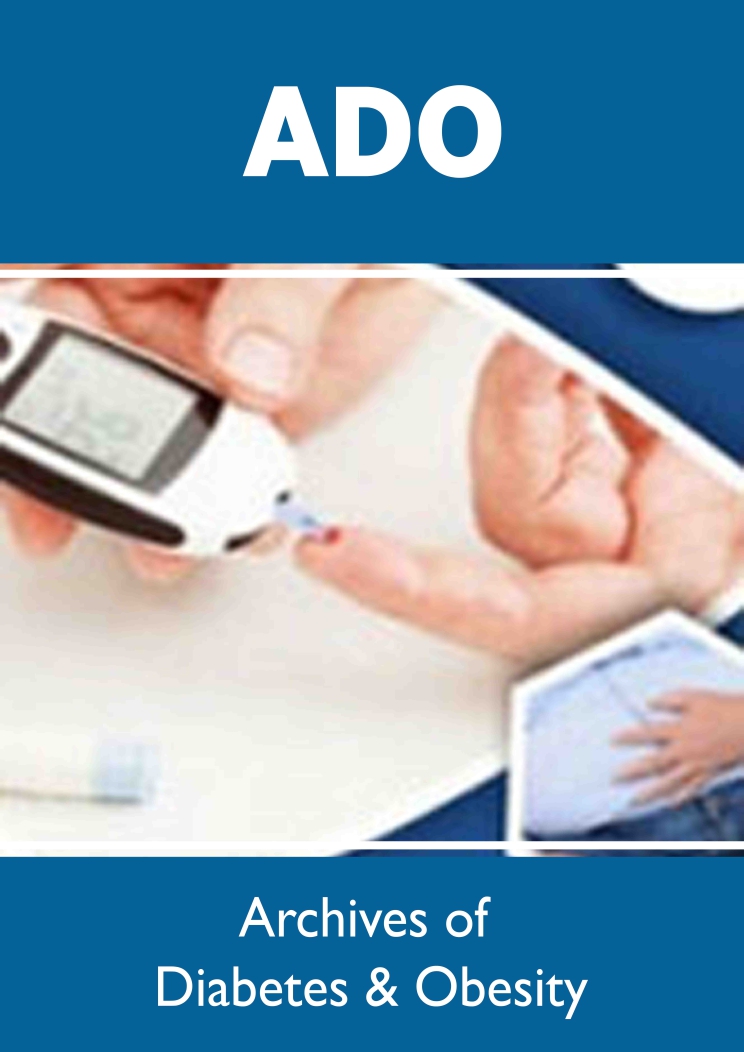
Lupine Publishers Group
Lupine Publishers
Menu
ISSN: 2638-5910
Review Article(ISSN: 2638-5910) 
Potential Management of Gestational Diabetes and its complications Using Antidiabetic Medicinal Plants of Cameroon: Case Study of Deficiency in Hormones Production, Uterine and Placental Abnormalities and Glucose Teratogenic Capability Volume 3 - Issue 3
Tsabang Nolé1* and Tsambang Djeufack Wilfried Lionel2
- 1Higher Institute of Environmental Sciences, Cameroon
- 2Centre de Cardiologie et Medical, Yaounde, Cameroon
Received:April 30, 2021; Published: May 07, 2021
Corresponding author: Tsabang Nolé, Higher Institute of Environmental Sciences, Yaounde, Cameroon
DOI: 10.32474/ADO.2021.03.000165
To view the Full Article Peer-reviewed Article PDF
The prevalence of Gestational Diabetes Mellitus (GDM) is raising worldwide parallel to the increment in the prevalence of obesity and Type2 Diabetes Mellitus. Gestational diabetes mellitus (GDM) affects about 6% of gestations and manifests after the 24th week of gestation. GDM is associated with motherly and neonatal adverse consequences. These consequences are not known by the populations of neighboring areas of developing Countries like Cameroon. Maintaining adequate blood glucose levels in GDM reduces morbidity for both mother and baby. For the first time a research on antidiabetic plants commonly used in Cameroon is done to select amongst them those which can help in the regulation of deficiency in hormones production, in the improvement of uterine and placental abnormalities and glucose teratogenic capability. To achieve this objective a systematical search was done using engines related to the effects such as: Enhance a drop-in insulin performance in its appropriate receptors in gestational diabetes; regulate hormones secreted by the placenta and fetus; prevent macrosomia; prevent growth disturbances; reduce congenital and maternal anomalies in gestational diabetes like (preeclampsia; hypotension; vascular lesions and post-gestational diabetes). A variety of placental hormones including estrogens, cortisol, human chorionic go-nadotrophin (HCG), progesterone and human placental lactogen are produced to maintain the pregnancy, and the risk of insulin resistance becomes greater. Some of these hormones can have a blocking effect on insulin, called contra-insulin effect, which usually begins about 20 to 24 weeks into the pregnancy. Typically, the pancreas is able to make additional insulin to overcome insulin resistance, but when the production of insulin is not enough to overcome the effect of the placental hormones, gestational diabetes results. Gestational diabetes is not caused by a lack of insulin, but by other hormones produced during pregnancy that can make insulin less effective, a condition referred to as insulin resistance. According to the recent redefinition, GDM is characterized by insulin resistance and fasting glycaemia levels higher than 92 mg per ml. Do known anti-diabetic plants regularly used in Cameroon help in the management of hormones deficiency production, uterine and placental abnormalities and glucose teratogenic capability connected to this disease? Zingiber officinale Lin. is currently the most potent herbal medicine habitually used to control the blood glucose levels and help prevent disorders resulting to the consequences of severe maternal hyperglycemia on postnatal development of offspring.
Keywords:Keywords: Gestational Diabetes; Hormonal Deficiency; Intrauterine Growth Restriction; Macrosomia; Microsomia; Hypoglycemia; Fetal Hyperinsulinemia; Glucose Teratogenic Capability
Abbreviations: GDM: Gestational diabetes mellitus; ESC: Embryonic stem cells; T2GDM: Type2 diabetes mellitus; HCG: Human chorionic gonadotropin; LH: ; FSH: ; CAMP: Cyclic adenosine monophosphate; PKA: Protein kinase; HPL: Human Placental Lactogen; IGF-1: insulin-like growth factor-1; PI3K: Phosphoinositide 3-kinase; ERK: Extracellular signal-regulated kinases; VEGF : Vascular endothelial growth factor; HUVEC: Human umbilical vein endothelial cells; VEGFR-1: Vascular endothelial growth factor receptor 1; VEGFR 2: Vascular endothelial growth factor receptor 2; MMP-1: Matrix metalloproteinase-1; MMP-2: Matrix meitalloproteinase-2; FGF21: Fibroblast growth factor 21; EVT: Endovascular Treatment; PAPP-A: Pregnancy-associated plasma protein A; IGFBP-4: Insulin-like growth factor-binding protein 4; IUP: intrauterine pregnancy; FBS: Fasting blood sugar; AMPk : Activated protein kinase: AGA: Appropriate for gestational age; NPY: Neuropeptide; UCP1: Uncoupling Protein 1; Pdx1: Pancreatic and Duodenal Home box 1;Gch1: GTPcyclohydrolase 1; PDX1: Pancreatic and duodenal home box 1; IUGR: Intrauterine growth retardation; Fgfr1: Fibroblast growth factor receptor 1; CaMKK: Calmodulin dependent kinase kinase; Thr172by AMPK: Threonine 172 Thr172) 72 by activated protein kinase; AKT1: Protein kinase B; KATP Channel: ATP-sensitive potassium channel; DCM : DNA Control Medicine ; StAR: Steroidogenic acute regulatory; LHR: Luteinizing hormone receptor; AR: Androgen receptor; PCOS: Polycystic ovary syndrome; FBS: Fasting blood sugar; DPPH: Diphenyl-2-picrylhydrazyl; NO: Nitric oxide; AGI: Alpha glucosidase inhibitors; DPP-4dipeptidyl peptidase-4 inhibitors; PE: Pulmonary embolism; Kp-10: kisspeptin-10; IGFBP-4: Insulin-like growth factor-binding protein 4; IGF- 1 and 2: Insulin-like growth factor-1 and 2 ; ROC: Receiver-operating characteristic
Abstract| Introduction| Hormones only Produced by Placenta| Clinical Interest of Placental Hormones| Methodology| Activities of some antidiabetic plants related to gestational diabetes and its complications| Discussion| Acknowledgements| References|

Top Editors
-

Mark E Smith
Bio chemistry
University of Texas Medical Branch, USA -

Lawrence A Presley
Department of Criminal Justice
Liberty University, USA -

Thomas W Miller
Department of Psychiatry
University of Kentucky, USA -

Gjumrakch Aliev
Department of Medicine
Gally International Biomedical Research & Consulting LLC, USA -

Christopher Bryant
Department of Urbanisation and Agricultural
Montreal university, USA -

Robert William Frare
Oral & Maxillofacial Pathology
New York University, USA -

Rudolph Modesto Navari
Gastroenterology and Hepatology
University of Alabama, UK -

Andrew Hague
Department of Medicine
Universities of Bradford, UK -

George Gregory Buttigieg
Maltese College of Obstetrics and Gynaecology, Europe -

Chen-Hsiung Yeh
Oncology
Circulogene Theranostics, England -
.png)
Emilio Bucio-Carrillo
Radiation Chemistry
National University of Mexico, USA -
.jpg)
Casey J Grenier
Analytical Chemistry
Wentworth Institute of Technology, USA -
Hany Atalah
Minimally Invasive Surgery
Mercer University school of Medicine, USA -

Abu-Hussein Muhamad
Pediatric Dentistry
University of Athens , Greece

The annual scholar awards from Lupine Publishers honor a selected number Read More...




